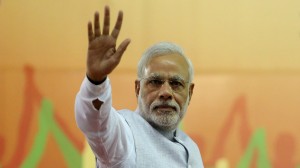By Mahesh Sachdev | Special to Gulf News
Even as Indian Prime Minister is a frequent traveller abroad and Riyadh is a capital frequented by world leaders, Narendra Modi’s official two-day visit to Saudi Arabia, starting today, is anything but ordinary — both in its contents and the context.
 Indeed, his own visit to the UAE last August is the nearest parallel to it.
Indeed, his own visit to the UAE last August is the nearest parallel to it.
India and Saudi Arabia are the largest countries in their respective sub-regions, which together form Southwest Asia. Therefore, the importance of the summit between Modi and King Salman Bin Abdul Aziz of Saudi Arabia goes beyond the bilateral context to envelope the entire region facing multiple challenges — ranging from economic downturn, geopolitical turmoil, insecurity, civil wars and terrorism.
Bilaterally, India’s ties with Saudi Arabia are substantive and gaining in substance. In recent years, the Kingdom has been the largest supplier of crude to India, the world’s third-largest oil importer and the only major economy with rising oil consumption.
In January, India imported 940,000 barrels per day of Saudi crude, up 29 per cent from last year, quenching nearly a quarter of India’s thirst for oil imports. India’s galloping oil imports also pushed the bilateral trade to $39 billion (Dh143.44 billion) in 2014-15, making Saudi Arabia India’s fourth largest trading partner — just one rank behind the UAE. More info
















